 Your new post is loading...
 Your new post is loading...
Mike Lewis and Pat Conaty developed this argument in detail in their book The Resilience Imperative – Co-operative Transitions to a Steady-state Economy. To promote the wider arguments in the book, Lewis and Conaty produced a series of very short articles. The following Special Report features their series on Community Land Trusts, Mutual Home Ownership, the Garden City Model and the Co-operative Land Bank. The Garden City Model merits special attention, as Garden Cities that took land out of the market were a full expression of radical socialist and co-operative economy planning. Nowadays, a number of parts of the world are showing an interest in reviving them. These three short illustrated articles contained in the report provide a crash course in what CLTs and the CLB is, and how practical land reform can be systematically implemented to return land to the Commons.
Consider this: in just a few short years, the open-source encyclopedia Wikipedia has made closed-source encyclopedias obsolete — both the hard-bound kind and the CD-ROM or commercial online kind. Goodbye World Book and Brittanica. The open-source concept was popularized through GNU and the GPL license, and it has spread ever since, in an increasingly rapid manner. The open-source OS, Linux, has been growing in users exponentially over the last few years, and while it still has a ways to go before it can challenge Microsoft or Apple, it has become a viable and even desirable alternative for many.
Open-source alternatives have been growing in number and breadth: from office software to financial software to web and desktop utilities to games, just about any software you can think of has an open-source alternative. And in many cases, the open-source version is better.
Now consider this: the open-source concept doesn’t have to just apply to software. It can apply to anything in life, any area where information is currently in the hands of few instead of many, any area where a few people control the production and distribution and improvement of a product or service or entity...
Every 500 years or so, European civilization and now world civilization, has been rocked by fundamental shifts in its value regime, in which the rules of the game for acquiring wealth and livelihoods have dramatically changed. Following Yochai Benkler's seminal Wealth of Networks, which first identifies peer production, the P2P Foundation has collated a vast amount of empirical evidence of newly emerging value practices, which exist in a uneasy relationship with the dominant political economy, and of which some authors claim, like Jeremy Rifkin and Paul Mason, that it augurs a fundamental shift. What would be the conditions for this new regime to become autonomous and even dominant, and what are the signs of it happening?
Free internet for all. Meshnet networks, or meshnets, are a form of intranet that doesn’t require a central router point. Instead of emitting from a single point, they’re distributed across an entire system of nodes. Accessing one is free—and doesn’t require the services of a telecom. Lau had spent the previous summer chatting with other meshnet enthusiasts in Europe, trying to figure out the best way to set up routers across the city. He suggested it was time to give it a try in Toronto. What grew out of Lau and Iantorno’s meeting, four months ago now, was a plan to build a meshnet in this city—one where users wouldn’t need to worry about eavesdroppers, because it would be encrypted. When it’s finished, Toronto’s first free-to-use meshnet should provide an accessible and secure internet community, maintained by locals keen on becoming digitally self-sufficient. Those early adopters could reshape our relationship to internet providers, and cut monthly rates out of the picture.
The P2P Foundation infrastructure of production and governance currently consists of three different aspects: - A formal foundation registered in the Netherlands with 3 operational hubs dedicated to organizing, advocacy, research and the facilitation of a knowledge commons.
- An expanding network of activists and researchers working at different levels of engagement, a small core team handling strategy and sustainability, and countless members engaging with and contributing to our information commons, including our blog, public Wiki and Loomio group.
- An ecosystem producing and sharing knowledge on the commons and P2P dynamics emerging throughout society. Our widely viewed and shared research wiki and blog are updated daily by our community.
As of 2016, the P2P Foundation’s structure has been reorganized around three interdependent operational hubs: the Foundation itself, Commons Transition and the P2P Lab...
Activities in 2015 are summarised in this article on the commonstransition site ...
http://commonstransition.org/what-the-p2p-foundation-did-in-2015/
Nursery Fields Forever is an innovative design proposal that fuses urban farming with nursery education. In our age of constant digital contact, connecting kids to nature seems more difficult than ever. Fortunately, intrepid thinkers, like aut- -aut, a team of Rome-based designers, are envisioning innovative ways to bring children closer to nature. Aut- -aut, which comprises Edoardo Capuzzo Dolcetta, Gabriele Capobianco, Davide Troiani, and Jonathan Lazar, recently won the AWR International Ideas Competition with “Nursery Fields Forever,” a proposal that fuses urban farming with nursery education.
The United Nations (UN) could lead and incentivize the achievement of the Sustainable Development Goals (SDG) by and across the five billion poorest in a fraction of the time at a fraction of the cost, if it would embrace the combination of holistic analytics, true cost economics, and Open Source Everything Engineering ...
If you are in business, any kind of business, not for profit, for profit, community, a team; in other words you are engaged in some kind of creative process, no matter what the goal, you daily benefit from measuring human behavior. This is well known.
Everything we do begins with a thought, no matter how unconscious or reactive. A mental process, at some level of consciousness, is engaging in your survival. By definition, this mental process is abstract. That is to say it is a scenario of conceptual understanding of what is happening out there in space. It is the model and story, if you will, that you hold in here, inside your head.
As such, if everything we do begins with a thought, then it makes all the sense in the world that if we want to change human behavior, we need to understand the thinking behind it.
The 21 decentralizing technologies and innovations in this list are all related to food, energy, water, shelter and waste.
They are designed to integrate you deeply with families, communities, societies, and all humans; in a bottom-up process rather than a centralized top-down structure.
Many of these technologies are open-source, some are high-tech and others are low-tech and low-cost solutions.
Reverting to traditional handicrafts is one way to sabotage the throwaway society.
In this article, we discuss another possibility: the design of modular consumer products, whose parts and components could be re-used for the design of other products.
Initiatives like OpenStructures, Grid Beam, and Contraptor combine the modularity of systems like LEGO, Meccano and Erector with the collaborative power of digital success stories like Wikipedia, Linux or WordPress.
An economy based on the concept of re-use would not only bring important advantages in terms of sustainability, but would also save consumers money, speed up innovation, and take manufacturing out of the hands of multinationals.
A potential solution to the massive problem of linkrot.
"The web today is highly centralized," IPFS founder Juan Benet wrote in an email. "I find it very concerning that so much of human expression and human communication these days is routed entirely via centralized social networks which may disappear at any moment, bringing down all the data with them—or at least breaking all the links."
"Instead," he explained, "we're pushing for a fully distributed web, where applications don't live at centralized servers, but operate all over the network from users' computers...a web where content can move through any untrusted middlemen without giving up control of the data, or putting it at risk."
Well-done documentary by ‘VPRO Tegenlicht’, with english subtitles, on the explosion of bottom-up energy generating initiatives, inspired by the Danish island of Samso, and spreading to many other countries. Here is the description of the program:
“”In the Netherlands, ordinary citizens are assuming responsibility for generating their own sources of energy through the installation of solar panels and wind turbines. This practice has grown into a widespread movement, and threatened the viability of traditional power companies in the region. As explored in the documentary Power to the People, this phenomenon has altered the population’s reliance on profit-centered corporate structures, and empowered their capacity for self-sufficiency.
Can a similar movement be made possible in other realms of daily existence such as health care?
When neighbors collaborate to share the costs of alternative energy methods, as it has been done on the Danish island of Samso, the entire community benefits. This is reflected in the savings they enjoy from bypassing the power companies, and the profits they incur from the surplus energies they generate.
the unified triple operating system Governance, business, and learning models are moving from centralized control to network-centric foundations. For instance, coalition governments are increasing in frequency, businesses are organizing in value networks, and collaborative and connected learning is becoming widespread.
In these cases, collaboration (working for a common objective) and cooperation (sharing freely without direct reciprocity) flow both ways.
The networked organization trinity is based on the Triple-A organization, as proposed by Valdis Krebs. It is structured to take advantage of the complexity and noisiness of social networks, allowing information to flow as freely as possible, and affording workers the space to make sense of it and share their experiences and knowledge.
The underlying concept of the trinity model is that organizations and their people are members of many different types of networks, communities of practice, and close-knit collaborative work teams.
|
An invitation to join us in shared bid for a 100 Million Dollars to fix health and social care The MacArthur Foundation has decided to deliver a mighty push to fixing the world’s most hairy, entangled, unfixable problems. The idea is to look hard for a promising organisation, one that has the tenacity and creativity to provide a real solution to a problem (almost any problem is eligible). They will provide the resources: a whopping 100 million dollars. We have been thinking hard about the problem of providing high-quality, affordable health and social care to all. We think we have a candidate solution: provision of care services by communities equipped with open source knowledge and technology. From where we stand, these communities deliver services that are based on modern science (like those provided by the state and the private sector), yet they retain low overhead and human touch (like those provided by traditional communities). So, here’s what we want to do. We want to apply for the 100 million dollar grant, with this solution. But not alone. We volunteer to coordinate a “decentralized application”, with hundreds of communities, and organizations large and small, a swarm of solution providers working on a cloud of problems related to the provision of health and social care. We think we will win. Why? Because decentralization is, simply, a superior approach.
Bossless organisations need shared vision, accountability, governance, shared identity, a decision-making protocol... and sustainable business models
PittMesh routers are owned by individuals and configured in a way that make them work together to build a larger, decentralized network. PittMesh is a new community-owned wireless network that runs OpenWrt, a widely supported, well documented, open source firmware for embedded systems like WiFi routers. PittMesh routers are owned by individuals and configured in a way that make them work together to build a larger, decentralized network. The project was started by a wireless networking non-profit called Meta Mesh and has been developed by a world-wide coalition of programmers for well over a decade. The PittMesh network uses a simple network routing protocol called Optimized Link-State Routing (OLSR). This protocol automatically senses other OLSR-enabled routers wirelessly and publishes routes to non-adjacent subnets on the network, which allows the routers themselves to act as the infrastructure needed to connect neighbors to one another. It also delivers Internet access from bandwidth donors.
Given Sir Tim Berners-Lee's oft-stated worries about internet privacy you'd have to wonder whether he'd do things differently if he had his time over again. David Irvine, CEO of "the oldest startup in the world", MaidSafe, is sure that he would. "If you taught a computer engineering graduate all about IP networks and computers then said 'here are a bunch of cables and routers now go away and design a network where we can all store data and communicate securely', the very last thing they'd do is design a server," he said. "The only reason we did it that way because disk drives were invented before the internet." Irvine and his colleagues have spent the last 10 years looking at ways to eliminate the weak link - the server - from the equation. "It should be about securing the data, not the server," he said. "The only way you can really do that is to create some form of network where humans can't interfere, and where a piece of data is never stored on a single machine. By definition that has to be an autonomous network."
Robert Steele, an advocate of open source everything, has written up his ideas of an open society and he addresses the presentation to the major developing economies... "This briefing has been prepared for the BRICS + Indonesia and Iran — and other nations such as Brunei, Malaysia, and the United Arab Emirates (UAE) — as a means of fostering a conversation about the future of Earth and humanity — there are solutions that are affordable, interoperable, and scalable."Co
Political scientist, Pia Mancini, is using tech to break down the barriers between politicians and the people
“There’s so much that is out of sync between the state, the government and the younger generation,” she says. “A huge divide exists between how we organise and communicate in our everyday lives, and how these old institutions expect us to interact with them.”
One of Mancini’s central projects, DemocracyOS, provides a platform for citizens to engage with politics away from those outdated structures. When a new piece of legislation is brought to congress in Argentina DemocracyOS is used to immediately translate and explain it in plain language. Citizens are also able to discuss and directly “vote” on these new bills using the site or desktop app.
Just two years after it was created, the platform is already being used by the federal government in Mexico to gather feedback on policy proposals, and by an NGO called iWatch to give voice to the Tunisian public in political decision-making.
The tale of how one researcher has made nearly every scientific paper ever published available for free to anyone, anywhere in the world.
Alexandra Elbakyan, a researcher from Kazakhstan, created Sci-Hub, a website that bypasses journal paywalls, illegally providing access to nearly every scientific paper ever published immediately to anyone who wants it.
The website works in two stages, firstly by attempting to download a copy from the LibGen database of pirated content, which opened its doors to academic papers in 2012 and now contains over 48 million scientific papers.
The ingenious part of the system is that if LibGen does not already have a copy of the paper, Sci-hub bypasses the journal paywall in real time by using access keys donated by academics lucky enough to study at institutions with an adequate range of subscriptions.
This allows Sci-Hub to route the user straight to the paper through publishers such as JSTOR, Springer, Sage, and Elsevier. After delivering the paper to the user within seconds, Sci-Hub donates a copy of the paper to LibGen for good measure, where it will be stored forever, accessible by everyone and anyone.
Rebel Geeks - The Citizens' network
This film investigates how Bolivian senator Nelida Sifuentes has led the campaign to restructure the way in which Bolivia and Latin America communicate, and restore power to ordinary citizens.
The tiny mountainous South American country has one of the world's slowest Internet connections, but the senator is leading the drive to develop infrastructure and software that will make Bolivia digitally independent.
"They want to train up generations of Bolivians who can write code and develop software.
They are trying to establish a "sovereign cloud", independent of international corporate and governmental control, that will protect the country's data and speed up access and connectivity.
Although they both use and support mobile internet platforms, they know that erecting more masts won't solve the basic problem of structural integrity. They want full technological sovereignty and we are catching them as they build the architecture from the bottom up.
On a spring day in 2012, I shut down my MacBook Air for the last time. From then on, my primary computing environment — at least on a laptop computer — was GNU/Linux.
I was abandoning, as much as possible, the proprietary, control-freakish environments that Apple and Microsoft have increasingly foisted on users of personal computers.
Almost four years later, here I am, writing this piece on a laptop computer running the Linux operating system and LibreOffice Writer, not on a Mac or Windows machine using Microsoft Word. All is well.
No, better than that — everything’s terrific.
A list of P2P trends for reconstructing our world with distributed infrastructures, shared resources, commons, and related livelihoods.
HTTP is broken. It's time for the distributed, permanent web.
The InterPlanetary File System (IPFS) is a new hypermedia distribution protocol, addressed by content and identities.
IPFS fundamentally changes the way we look for things, and this is it's key feature. With HTTP, you search for locations. With IPFS, you search for content.
IPFS is still in Alpha release, but you can find out more here...
This is a first draft of a proposal to design and build a user friendly, egalitarian, and decentralized social platform that enables and inspires a mass of cooperative participants to come together as a powerful movement. A movement capable of transforming our political and economic systems in order to make a more just, democratic, and sustainable world. It’s a plan to build a platform designed to facilitate a modern renaissance. Your feedback is welcome.
Mosaic will be a decentralized social network familiar to those who have used Facebook, Google+, or Ning. It will be one of the first major decentralized apps built on the decentralized web protocol. Its codebase will have a type of licence that is open to commoners but closed to extractors.
We hope that Mosaic will not only provide an escape from Facebook, but the means to better coordinate and act with our purpose-driven peers, a way to unite our economic, political, environmental, and social movements.
Mosaic will consist of independent nodes operating on the decentralized protocol that interact across servers. At first, there will be two primary types of nodes, user nodes and a community nodes. Because users of the decentralized protocol have the freedom to move from one server to another and Mosaic is an app run on the decentralized protocol that means Mosaic users have mobility as well.
|



 Your new post is loading...
Your new post is loading...



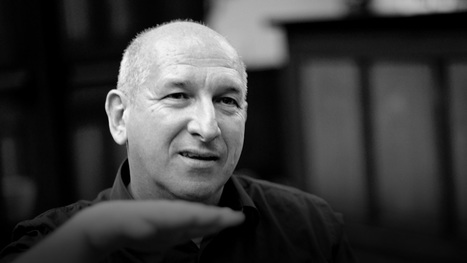


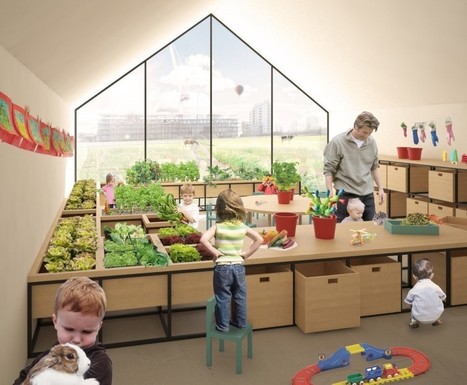
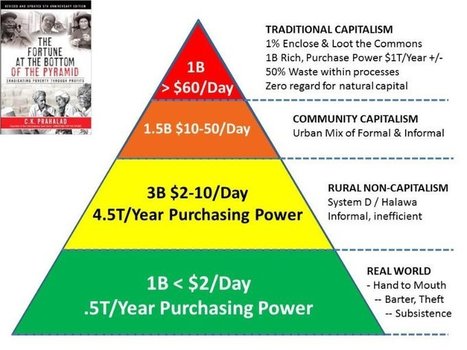



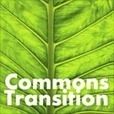




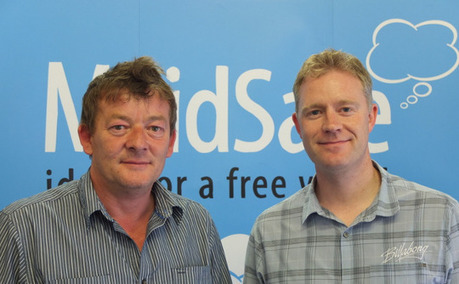
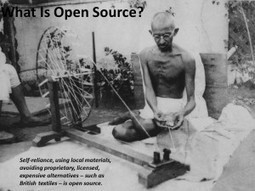













Can land ownership and management be arranged to serve the community?